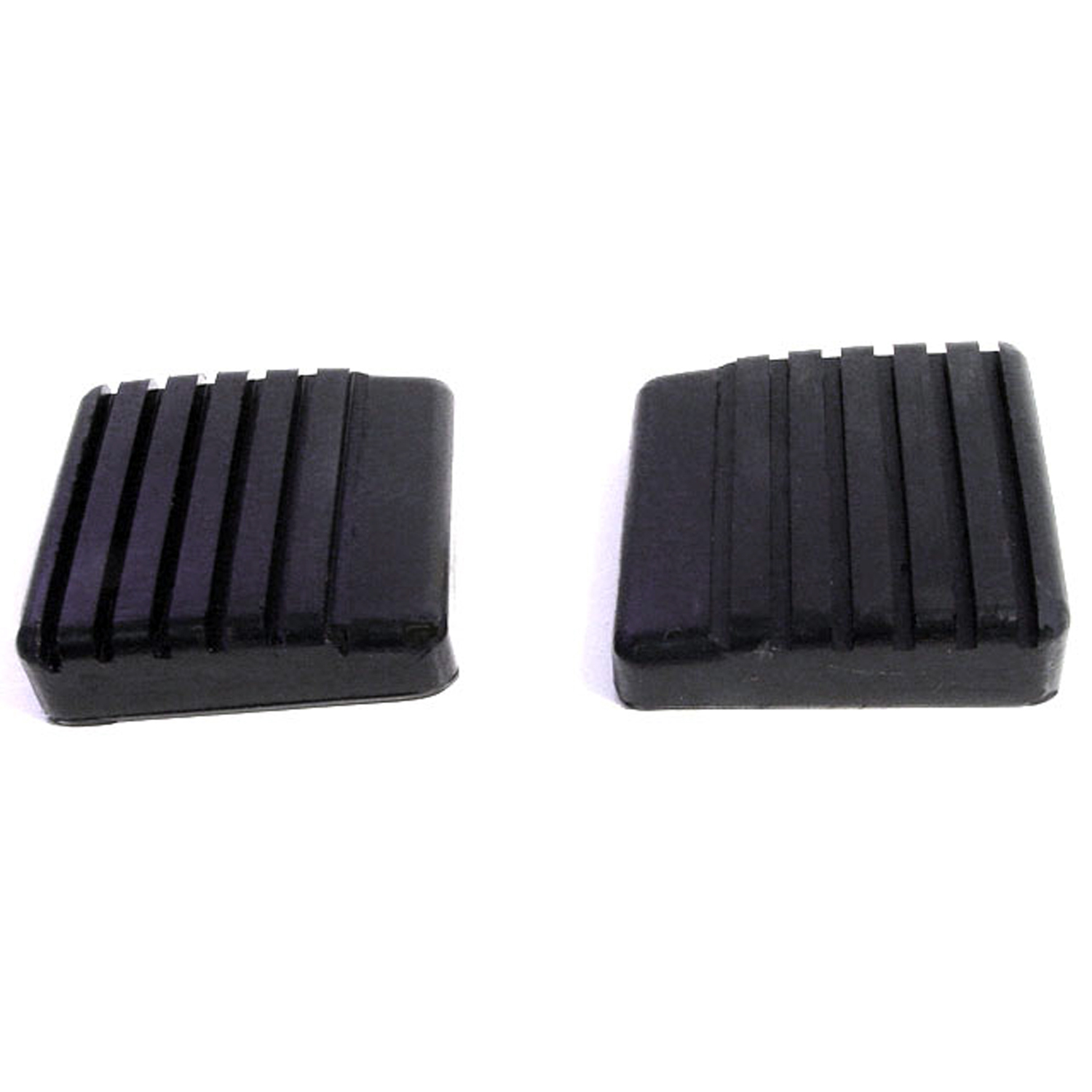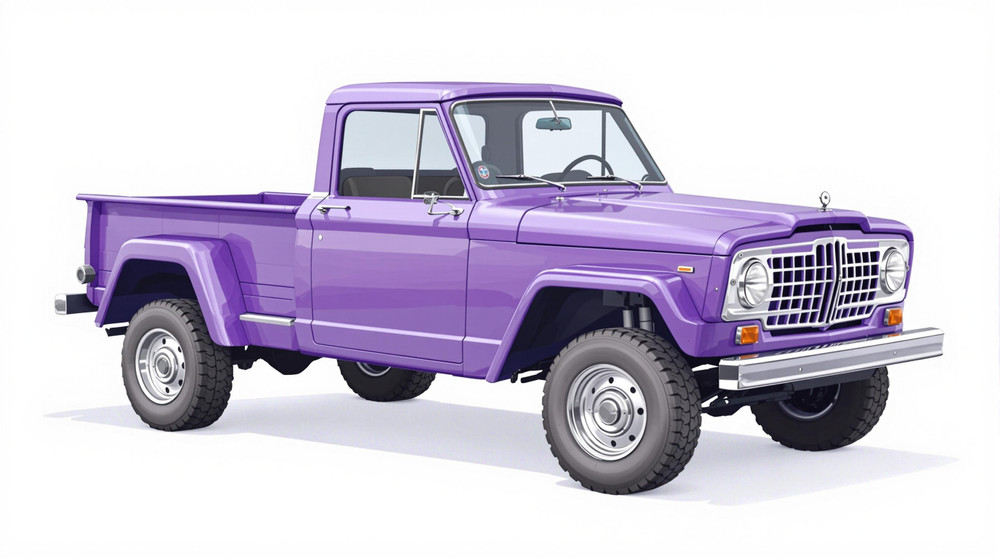Image of 1962 Jeep Tornado, Note: These illustrations use artistic license and may differ from actual historical models.
Performance Metrics
Fundamental Metrics
Emotional Appeal
MMP Rating
| Engine Specifications | |
|---|---|
| Engine: | Tornado 230 I6 |
| Displacement: | 230 cu in (3.8 L) |
| Horsepower: | 140 hp |
| Torque: | 210 lb-ft |
| Compression Ratio: | 8.5:1 |
| Ignition System: | Conventional |
| Cooling System: | Liquid-cooled |
| Performance Specifications | |
| 0-60 Time: | Estimated 15 seconds |
| 1/4 Mile Time: | Estimated 20 seconds |
| Top Speed: | 100 mph |
| Transmission and Drive | |
| Drive Type: | 4WD |
| Transmission Type: | 3-speed manual |
| Fuel and Efficiency | |
| Fuel System Type: | Carburetor |
| MPG: | Estimated 15-20 mpg |
| Dimensions and Brakes | |
| Brakes: | Drum brakes |
| Wheelbase: | 110 in |
| Weight: | 3,500 lbs |
Note: Specifications for classic cars are given to the best of our ability, considering the limited and variant data available.
Unearthing the Trailblazing 1962 Jeep Tornado
The 1962 Jeep Tornado stands as a testament to innovation and rugged American engineering. Born from the storied assembly lines of Kaiser Jeep, this vehicle emerged during an era when utility and durability were paramount. The Tornado was not just another Jeep; it was the harbinger of the modern overhead cam engine in American trucks, a bold move by the manufacturer that set it apart in the early 1960s.
One unique fact that sets the Tornado apart is that it was the first post-war U.S.-designed vehicle to feature an overhead cam (OHC) six-cylinder engine, a significant leap forward in automotive engineering at the time. This innovation promised more power and efficiency, capturing the attention of both the commercial and military sectors.
Design and Innovation
The exterior of the 1962 Jeep Tornado was utilitarian yet iconic, with its boxy silhouette and rugged features that spoke to its off-road capabilities. The interior was Spartan, with functionality taking precedence over luxury. Materials were chosen for durability, reflecting the vehicle's workhorse nature. Technologically, the Tornado's OHC engine was its crowning glory, offering a glimpse into the future of engine design.
Color options for the Tornado were typically subdued, with Forest Green and President Red being popular choices among the few available. The most iconic body style was undoubtedly the pickup truck version, which showcased the vehicle's utilitarian design and versatility.
Historical Significance
The Jeep Tornado left an indelible mark on automotive history through its pioneering engine design. While it may not have been as commercially successful as its contemporaries, its technological advancements laid the groundwork for future developments in engine efficiency and performance.
Performance and Handling
The 1962 Jeep Tornado was not built for speed but for capability. Its top speed and acceleration were modest by today's standards, but it excelled in traversing rough terrain and hauling heavy loads. The ride was firm, and handling was straightforward, with drivers feeling every nuance of the road or trail beneath them. The distinctive hum of its OHC engine provided an aural backdrop to its steadfast performance.
Ownership Experience
Owners of the Jeep Tornado valued it for its reliability and ease of maintenance. It served as a daily driver for some, a dependable work vehicle for others, and even a showpiece for enthusiasts of military and utility vehicles. While not without its quirks, the Tornado was generally considered a solid machine that could be kept running with regular care.
Fun Facts
The Tornado may not have had a vast production run, but it did find its way into various niche markets and even into the hands of a few notable personalities of the time. Although not known for breaking speed records, it did set a standard for engine design that would influence future models. Criticisms often centered on its unconventional engine, which was sometimes misunderstood in a market accustomed to more traditional powerplants.
Collector's Information
Today, the 1962 Jeep Tornado is a rare find, with production numbers not as high as more mainstream models. Collectors might expect to pay anywhere from $10,000 to $30,000 depending on condition and originality, though these figures are best estimates given market fluctuations. The Tornado has seen a modest appreciation in value over time as enthusiasts seek out unique pieces of automotive history.
Conclusion
The 1962 Jeep Tornado stands as a monument to a time when pushing the boundaries of design and technology was paramount. Its legacy is not just in its ruggedness or utility, but in its daring departure from convention. For those who own one today, it's not just a vehicle; it's a piece of history that continues to inspire admiration and curiosity.
1962 Jeep Tornado Catalog of Parts
 1962 Jeep Tornado Clutch and Brake Pedal Pads. Pair-CB 61-BClutch and Brake Pedal Pads. Pair
1962 Jeep Tornado Clutch and Brake Pedal Pads. Pair-CB 61-BClutch and Brake Pedal Pads. PairWhy Choose Metro?
For over 100 years, Metro Moulded Parts has been the pinnacle of quality in classic car restoration parts. Our commitment to precision and authenticity in every component ensures a perfect fit and an OEM-level appearance.
- Expert Craftsmanship & Quality: Each part is a testament to our dedication to reliability and perfection, crafted from original designs and thoroughly tested.
- Advanced Technology: We use cutting-edge techniques to create flawless, long-lasting parts that surpass others in performance.
- SuperSoft Sponge – The Ultimate Door Seal: Not only are our door seals 30% softer than competitors', but they're also guaranteed to never leak. They effectively reduce wind and road noise, enhancing your classic car's comfort and driving experience.
- Proudly American: Our parts are a product of American craftsmanship, made in the USA with a spirit of excellence and heritage.
- Unrivaled Warranty: We back our products with a 30-year industry-leading warranty, a testament to our confidence in their quality.
Join us in preserving the legacy of classic cars with parts that are crafted for perfection, not just made.

